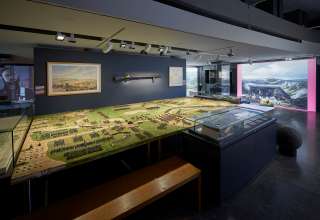Did you know that only 3 of the cannons from one of Europe's mightiest fortresses have survived? That until the end of the XVIII Century, the Fortress of Luxembourg had no more than 170 guns of different calibres, while a single ship, Lord Nelson's famous HMS Victory, had no fewer than 104?
Yet artillery was the key element of such fortresses, and the evolution of their firepower shaped innovation in the art of defending a stronghold. Powder magazines, cannon ball stores, gun carriage sheds, arsenals, laboratories, foundries, artillery barracks, bastions, casemates, forts: everything was geared to the day-to-day management of these heavy guns.
Cannons occupy a special place in our imagination. Starting with the fantastically eventful history of a three-pounder that last served during the 101-gun salute on the occasion of the birth of Grand Duke Jean on 6 January 1921, the exhibition traced the constant evolution of the Fortress's guns from the end of the Middle Ages to the turn of the XX Century. As Burgundian, Spanish, French, Austrian, Dutch and Prussian rulers came and went, through 2 major fires, the 1684 siege and the 1795 blockade, the guns would be captured and retaken, melted down and exchanged.
A publication directed by François REINERT, Deputy Executive Curator at the M3E, is now available. With 274 richly illustrated pages, this catalogue offers a summary covering not only the arsenal of the mighty Fortress of Luxembourg, but also the important role played by the artillery in the conflicts that befell the Duchy from the Middle Ages through to the fortress being dismantled in 1867. An 'explosive' page layout (by the granduchy agency) brings this subject to life, including 52 original, never-before-seen articles written by military history specialists, including Guy THEWES (the 2 Musées de la Ville, Luxembourg) and Bruno COLSON (University of Namur). The catalogue is on sale in the shops at our 2 museums and in bookshops.
The temporary exhibition ran from 26 June 2019 to 22 March 2020 on the first floor of the Musée Dräi Eechelen.







